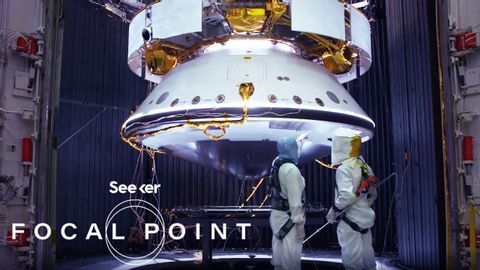
Subtitles & vocabulary
NASA’s Ambitious Mission to Bring Martian Samples to Earth
00
Summer posted on 2020/09/09Save
Video vocabulary
sort
US /sɔrt/
・
UK /sɔ:t/
- Transitive Verb
- To organize things by putting them into groups
- To deal with things in an organized way
- Noun
- Group or class of similar things or people
A1TOEIC
More evidence
US /ˈɛvɪdəns/
・
UK /'evɪdəns/
- Uncountable Noun
- Factual proof that helps to establish the truth
- Information presented in court to prove or disprove alleged facts.
- Transitive Verb
- To indicate clearly; to be evidence of.
- To show clearly; prove.
A1TOEIC
More ancient
US /ˈenʃənt/
・
UK /'eɪnʃənt/
- Adjective
- Very old; having lived a very long time ago
- Relating to a period in history, especially in the distant past.
- Noun
- A person who lived in ancient times.
A2
More compelling
US /kəmˈpɛlɪŋ/
・
UK /kəmˈpelɪŋ/
- Transitive Verb
- To force someone to do something
- Adjective
- Making you do, believe something; persuasive
B1
More Use Energy
Unlock All Vocabulary
Unlock pronunciation, explanations, and filters
